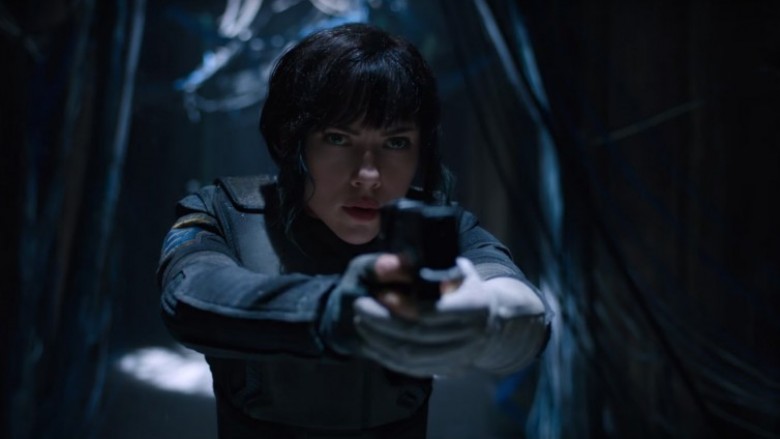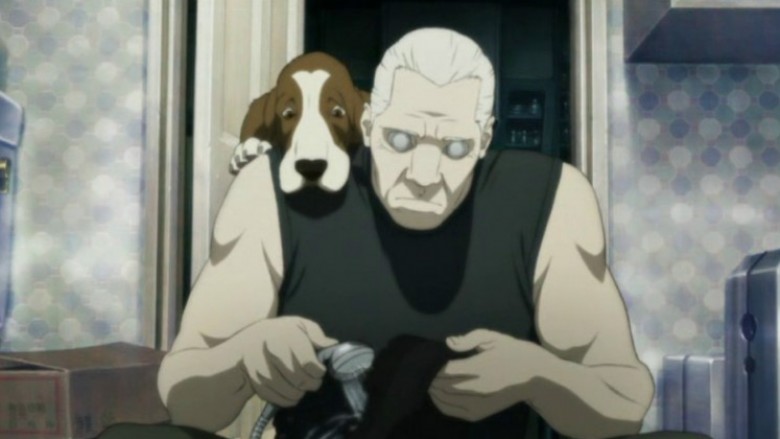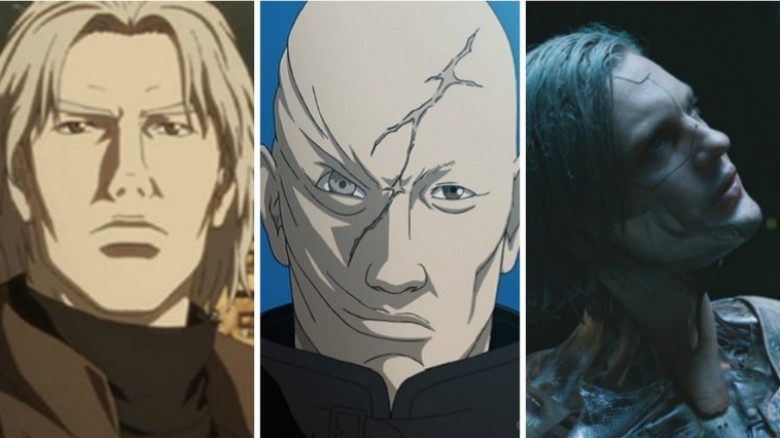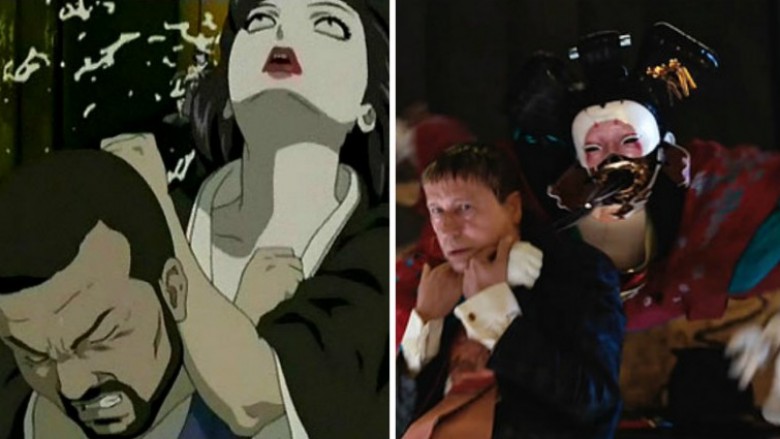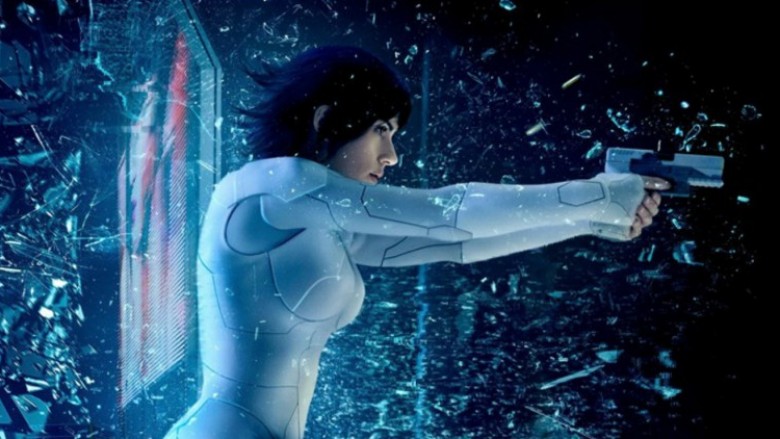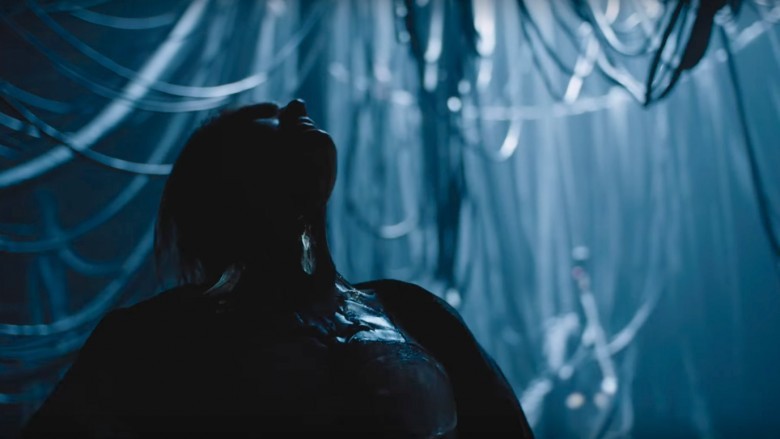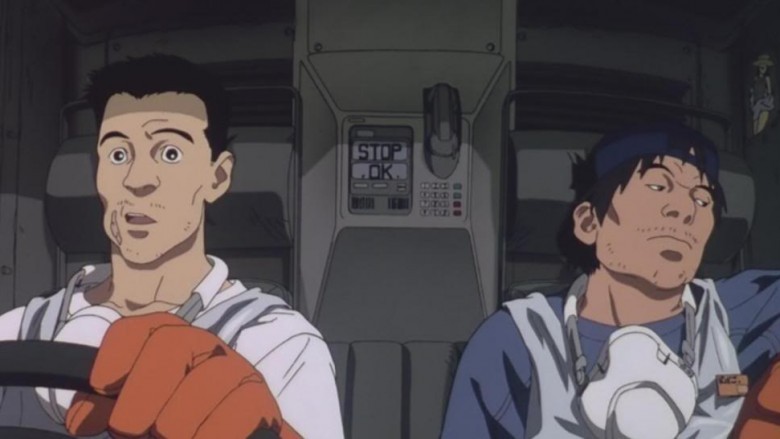Ghost In The Shell Moments Only True Fans Understood
Live-action Ghost in the Shell is finally a reality, and it's good enough to make you think about adopting a basset hound. (It's a lot of responsibility, but it's more advisable than swan diving off a skyscraper or running around naked, you weirdo.) Here are some things true fans love about Ghost in the Shell.
Naturally, spoilers of the major variety ahead:
The importance of basset hounds
In 1995s Ghost in the Shell anime, you see a goofy-looking basset hound in a TV ad for some presumably dog-friendly product or other. Later, the same dog appears in a crowd on an elevated walkway. Basset hounds are part of Mamoru Oshii's signature — every Oshii flick has a droopy-faced, cuddly basset hound.
In Ghost in the Shell 2: Innocence, Batou owns a needy basset hound named Gabriel. Critics have commented on how Batou's interactions with the basset hound are the only warm moments of Ghost 2. For many fans, Gabriel is a reason, the reason even, to keep watching. Plus, as we say here in Internet Town, da pupper is totes adorbs! Once you've seen Ghost 2, you'll never get over when Batou sends Gabriel to live with Togusa and his family.
So, when Batou feeds that derpy basset hound in the marketplace in the Ghost in the Shell movie, it matters — even if it is way too fat to be a stray.
Familiar voices
Hadley Cruz is Ghost in the Shell fans' new favorite villain. He's got a great, schizophrenic cross of many of the best (or worst?) qualities of GitS villains. What's more, he's a walking, talking series of tubes just bursting with fanservice. Besides, it's Michael Pitt from Boardwalk Empire being as menacing as all cyborg get-out. How can you not get behind that?
Looking like a mix of Blade Runner, Akira, The Puppet Master, and the scariest Ghost in the Shell villain ever — scarfaced Kazundo Gouda from Stand Alone Complex 2nd Gig – Hadley Cruz gives true fans deja vu. The dude sounds like Bane doing an Auto-Tuned impression of the kidnapper from Taken. Of course, Kazundo Gouda's mangled appearance was a matter of choice, while Hadley Cruz is simply trying to rebuild himself.
Geisha and gunfights
So, how about that opening gun battle? Shockingly, ScarJo's first big action sequence outdoes the thrilling first minutes of the 1995 anime. It has everything: the thermoptic suit reveal, the wicked-cool swan dive of death-bringing, the secret meeting that gets cut short by gunfire ... plus some surprises, too — most of which were pulled from other Ghost in the Shell properties.
For instance, the creepy robotic geisha are right out of the Stand Alone Complex series. So, right from the start, true fans get some assurance that, rather than greedily licensing a brand and blindly tacking on some prefab script that only proves nobody involved bothered to research anything (hi, Max Payne!), the production team for GitS has clearly done their homework.
Nude suit riot
The Major's outfit was met with some controversy but true fans know there's precedent for a fully-clothed Major elsewhere in the series.
ScarJo's getup takes the form-fitting blue-black suit from Stand Alone Complex, dyes it off-white (the color and texture of her endoskeleton on the cover of the manga), and crosses it with the 1995 anime's famed-by-hormonal-teenagers-everywhere combat birthday suit. The on-screen result: a thermoptic "nude suit" that captures the spirit of the anime rather nicely, while allowing the movie to cater to a wider, PG-13 audience.
For once, a preset character's updated look wasn't just some cynical scheme cooked up by Hollywood. Then again, nipples on the Batsuit spelled near death for the franchise, so you can never be too careful.
Philosophical dilemmas
Ghost in the Shell fans owe a debt of gratitude to French thinker Rene Descartes for being so bloody wrong when he proposed his idea of how the mind and body co-exist. Cartesian dualism, as it's known, says that there's a body and there's a mind, two separate entities. Simple enough, right?
Simple, sure, but also wrong, according to Oxford philosopher Gilbert Ryle who, in 1949, wrote off Cartesian dualism as the idea of the spirit/mind/soul being a "ghost in the machine." Then in 1967, along came psychologist and philosopher Arthur Koestler. He named his takedown of the Cartesian mind-body relationship The Ghost in the Machine, a tribute we're sure Ryle just adored. It's Koestler's book which helped to inspire Ghost in the Shell — his ideas are lofty and aggravatingly dense, but the gist is that there is no separation between mind and body.
Add A.I. to this equation, and things get murky. The questions pile up, and soon you start to wonder if you're even in the same universe anymore. What does it all mean? Does the Major's ghost make her more human than machine? At what point does the Third Law of Robotics apply to cyborgs like her? Do androids dream of electric sheep? Deckard, have you ever retired a human by mistake?
Garbage collectors
Imagine finding out that your family was a false memory. You don't know it yet. In fact, you're certain that they're real people, and yet you can't remember your mother's birthday, the house you grew up in, and have no memories of going to school. Hell, you're not even sure what you did this morning. You do know one thing — that you met a nice man at a bar and he gave you instructions on how to use computer terminals to hack into your wife's ghost to find out whether she's cheating on you.
That's the dilemma of the garbage collector in '95s Ghost in the Shell. (The 2017 version is a little different, but it's equally jarring.) After an armed struggle (and a sweet showdown on the water), you're dragged into state custody, where you're told to your face that your family is not real. Your precious daughter has never existed. She is a figment, a lie. You're told you've lived ten years in a flat by yourself.
No, it can't be! You have a picture of her in your pocket. You pull out the photo and show it to your interrogators. They're unmoved. You turn it around and you see it for what it really is: a picture of yourself, alone, smiling like a dolt. Now, that's entertainment!
